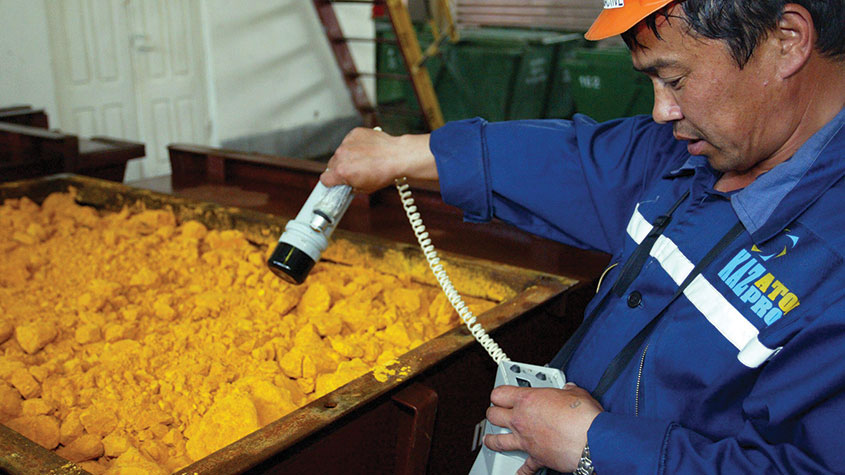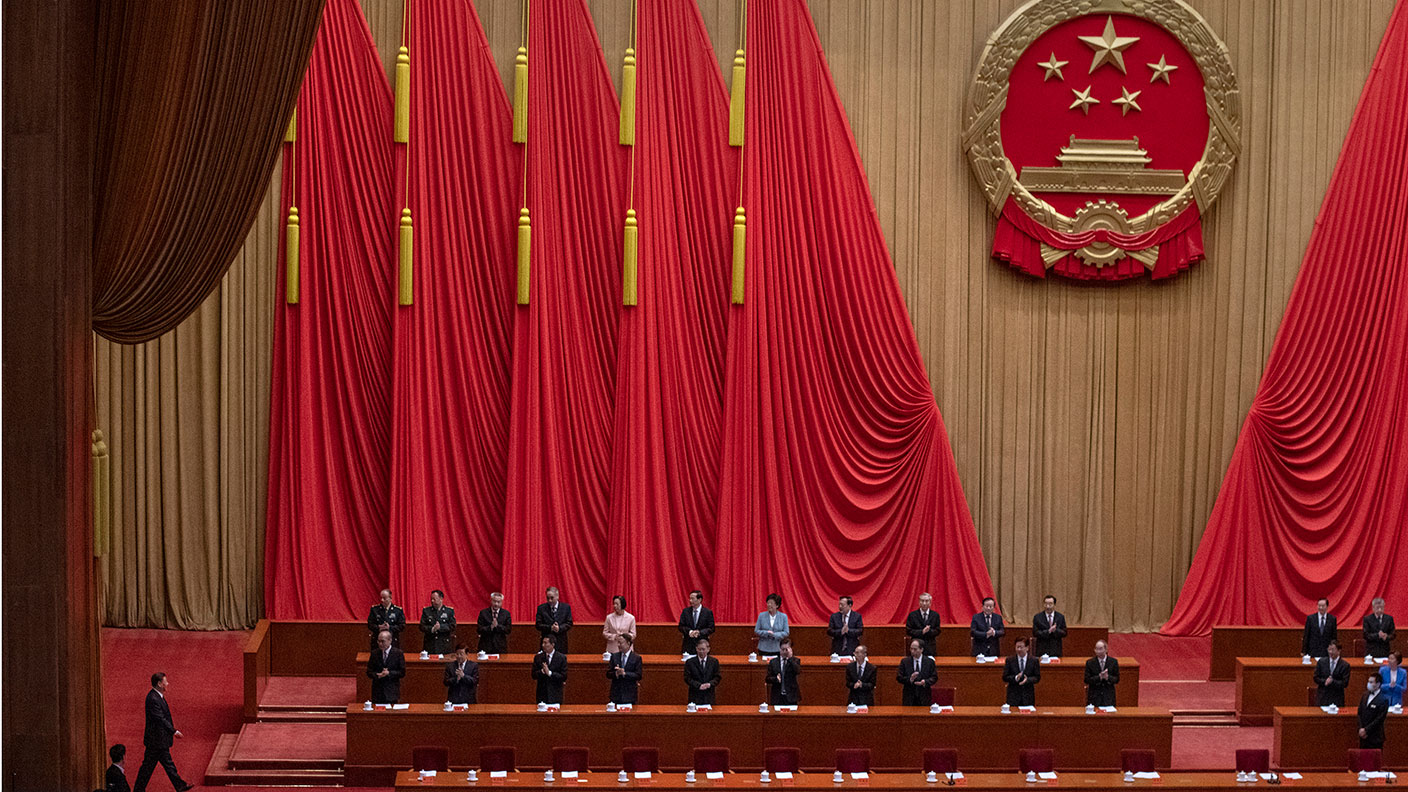Iron-ore price fall hits mining stocks
The iron-ore price hit a record high of over $235 a tonne in May. But it has since fallen to below $100, sparking a sell-off in mining stocks.

“China’s moves to rein in its mammoth steel industry have roiled [iron ore] markets this year,” say Krystal Chia and Yuliya Fedorinova on Bloomberg. Global iron-ore prices hit a record high in May; contracts for spot (immediate) delivery to north China soared to over $235 a tonne. Since then, they have slumped by around 60%, falling below $100 a tonne for the first time in a year.
The turmoil in the real-estate sector has played a minor role in the latest slump. However, the underlying cause of both boom and bust is the Chinese government’s attempts to curb steel production in order to reduce power consumption, cut carbon emissions and – most pressingly – improve air quality ahead of the Winter Olympics next year. Hence the industry saw iron-ore prices “spiking in the first half as [steel] mills rushed to front-load volumes ahead of additional production restrictions being rolled out”, followed by the recent rout as demand dried up.
An overreaction both ways
Just the surge in May was “an overblown rally”, the plunge was “a disorderly retreat”, says Clyde Russell on Reuters. Neither was “fully justified by the fundamentals of supply and demand”. Changes in physical shipments of iron ore are “nowhere near as dramatic as the moves in prices”. China’s iron-ore imports in the first eight months of the year were down just 1.7% from the same period in 2020; imports in August were the highest since April, with no sign that inventories at ports are building.
MoneyWeek
Subscribe to MoneyWeek today and get your first six magazine issues absolutely FREE

Sign up to Money Morning
Don't miss the latest investment and personal finances news, market analysis, plus money-saving tips with our free twice-daily newsletter
Don't miss the latest investment and personal finances news, market analysis, plus money-saving tips with our free twice-daily newsletter
The fact that price moves have been so excessive may be due to “increased speculator interest in a market that traditionally was the preserve of large players, miners and steel mills”. In any case, with prices around $100/tonne, conditions look more balanced. “History suggests that iron ore is likely to spend more time below $100 a tonne than above it.”
Blue-chip miners look cheap
The slump has The iron-ore price hit a record high of over $235 a tonne in May. But it has since fallen to below $100 a tonne, sparking a sell-off in mining stocks., says Alex Gluyas on the Australian Financial Review. “Analysts predict the worst may not yet be over… so investors are at a crossroads in terms of trying to catch a falling knife by picking a bottom of the iron-ore price, or rotating out of heavily exposed iron-ore stocks.”
Yet diversified miners such as Rio, BHP, Anglo American, Glencore and Vale “are in the best shape ever”, says Andrew Bary in Barron’s. Their balance sheets are strong. Limited capital expenditure means good cashflow. “Even with the slump in iron ore, the producers remain highly profitable… other commodities are in better shape.” Copper is up 20% this year, aluminium is up 40% and thermal coal prices have doubled. Price/earnings ratios are in single digits and dividends are attractive. “For investors willing to accept some risk, the Big Five miners offer a rich opportunity.”
Get the latest financial news, insights and expert analysis from our award-winning MoneyWeek team, to help you understand what really matters when it comes to your finances.
Cris Sholto Heaton is an investment analyst and writer who has been contributing to MoneyWeek since 2006 and was managing editor of the magazine between 2016 and 2018. He is especially interested in international investing, believing many investors still focus too much on their home markets and that it pays to take advantage of all the opportunities the world offers. He often writes about Asian equities, international income and global asset allocation.
Cris began his career in financial services consultancy at PwC and Lane Clark & Peacock, before an abrupt change of direction into oil, gas and energy at Petroleum Economist and Platts and subsequently into investment research and writing. In addition to his articles for MoneyWeek, he also works with a number of asset managers, consultancies and financial information providers.
He holds the Chartered Financial Analyst designation and the Investment Management Certificate, as well as degrees in finance and mathematics. He has also studied acting, film-making and photography, and strongly suspects that an awareness of what makes a compelling story is just as important for understanding markets as any amount of qualifications.
-
 Boost for over 100,000 families on Child Benefit as new HMRC payment system rolled out
Boost for over 100,000 families on Child Benefit as new HMRC payment system rolled outThousands of households will no longer have to pay the dreaded High Income Child Benefit Charge through self-assessment
-
 Are you being haunted by the ghost of Christmas past? How festive cutbacks could boost your long-term wealth
Are you being haunted by the ghost of Christmas past? How festive cutbacks could boost your long-term wealthThe average family spends around £1,000 over the Christmas season. Here’s how much you could have gained if you had invested some of the money instead.
-
 These 2 stocks are set to soar
These 2 stocks are set to soarTips The returns from these two aluminium and tin stocks could be spectacular when the commodity cycle turns says David J Stevenson.
-
 The best ways to buy strategic metals
The best ways to buy strategic metalsTips Weaker prices for strategic metals in the alternative-energy sector are an investment opportunity, says David Stevenson. Here, he picks some of the best ways to buy in.
-
 A lesson for investors from a ill-fated silver mine
A lesson for investors from a ill-fated silver mineAnalysis Mining methods may have changed since the industry’s early days, but the business hasn’t – digging ore from the ground and selling it at a profit. The trouble is, says Dominic Frisby, the scams haven't changed either.
-
 The natural resources industry is in a tight spot – which is bad news for the rest of us
The natural resources industry is in a tight spot – which is bad news for the rest of usOpinion The natural resources industry is in a bind. We need it to produce more energy and metals, but it has been starved of investment, plagued by supply chain issues, and hobbled by red tape. That’s bad news for everyone, says Dominic Frisby.
-
 How to invest in the copper boom
How to invest in the copper boomTips The price of copper has slipped recently. But that’s temporary – the long-term outlook is very bullish, says Dominic Frisby. Here, he explains the best ways to invest in copper.
-
 Why investors should consider adding Glencore to their portfolios
Why investors should consider adding Glencore to their portfoliosTips Commodities giant Glencore is well placed to capitalise on rising commodity prices and supply chain disruption, says Rupert Hargreaves. Here’s why you should consider buying Glencore shares.
-
 How to invest in the multi-decade boom in industrial metals
How to invest in the multi-decade boom in industrial metalsTips The price of key industrial metals has already begun to rise. The renewable energy transition will take them higher, says David Stevenson. Here's how to profit.
-
 Avoid China’s stockmarket – here’s what to invest in instead
Avoid China’s stockmarket – here’s what to invest in insteadOpinion China’s stockmarket is not a good place for investors to be. But you can't just ignore the world's second-largest economy, says Dominic Frisby. Here, he picks an alternative China play.
